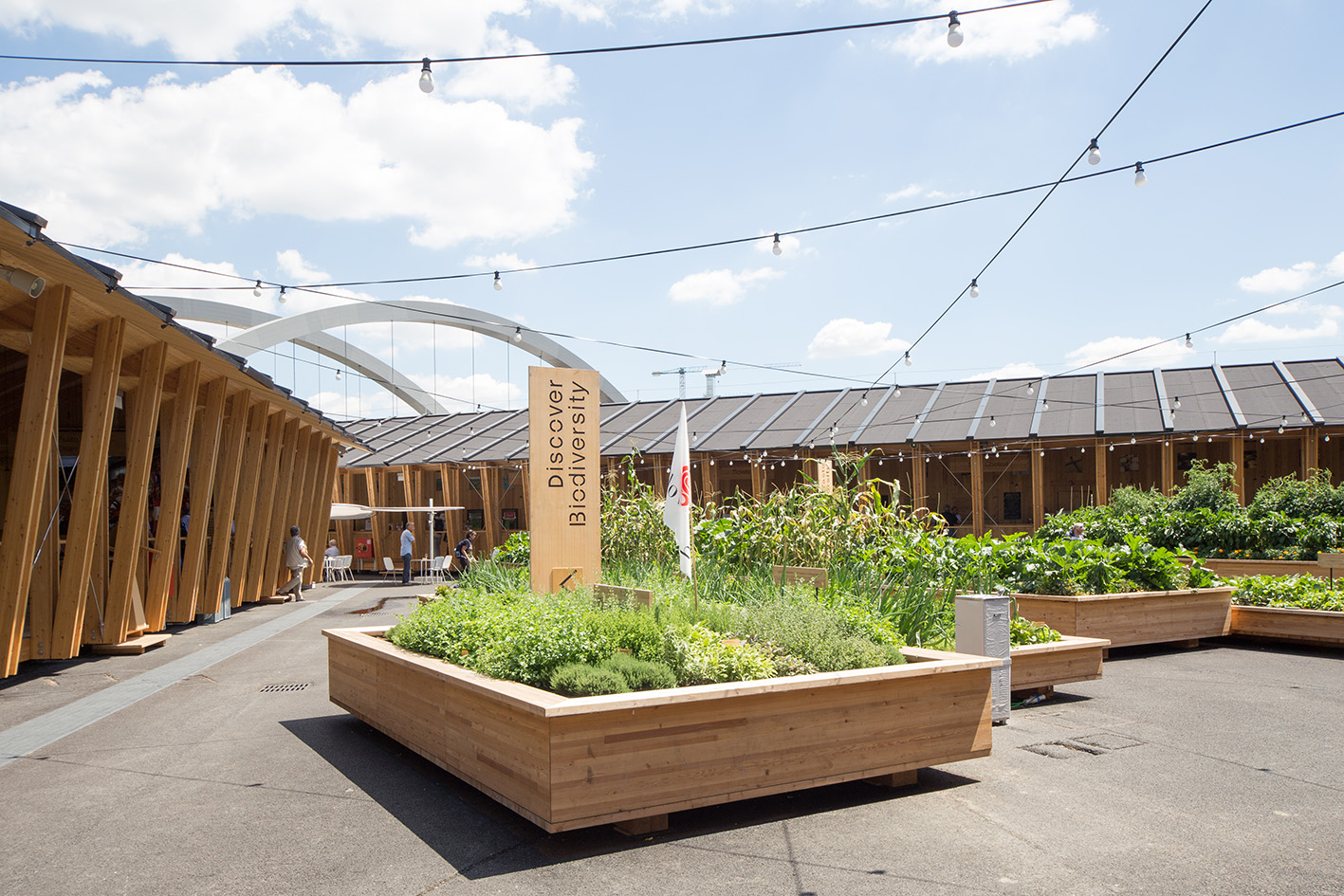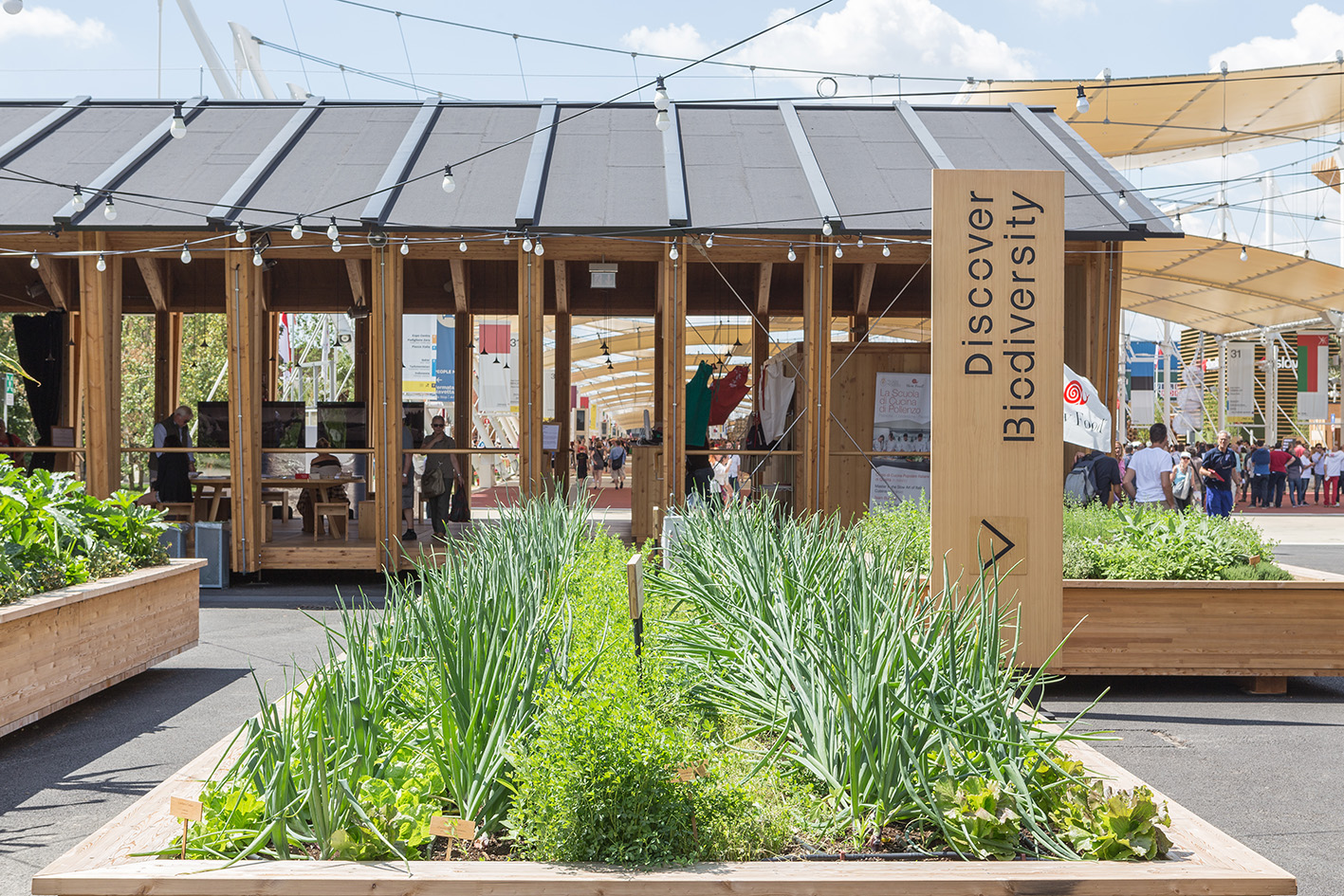25 September 2015
The Slow Food pavilion, which proclaims Save Biodiversity. Save the Planet, is certainly not one of the most popular with visitors to the Expo. On the official map of the event it was not even included among the 90 whose outlines were presented under the inviting if somewhat clumsy title A trip around the world in the architecture of Expo (where even the US’s Food Truck Nation appeared). Of course its out-of-the-way position does not help, but the main reason for the low number of visitors is the unspectacular character of the architecture, in a situation where pavilions have always tried to outdo one another in the eccentricity of their design. Herzog & de Meuron, in agreement with the founder of Slow Food, Carlo Petrini, chose to shift the attention in a decisive manner from the container to the content: no “pompous and unsustainable” structure was to distract visitors from the importance of biodiversity in farming and food and from the need to adopt new habits of consumption. In fact the Swiss studio had already walked away from its role as one of the master planners of the Expo in 2011, precisely because it had found it impossible to persuade the nations taking part to renounce their self-celebratory pavilions. The architecture proposed for Slow Food consists of three simple wooden sheds, arranged on a site with an area of 3500 square meters to define the triangular space of a courtyard with a small and environmentally friendly vegetable garden. These long and thin buildings recall the typical farmhouses of Lombardy and stand at the foot of the Mediterranean Hill. Inside them, a series of tables creates a convivial atmosphere, a bit like a market, that introduces visitors to the exhibition entitled Discover Biodiversity: here they can watch audiovisuals and read texts that speak about our modes of consumption and their impact on the planet, meet representatives of sustainable farming and local food production or simply touch and smell seeds. The experience of biological diversity is completed by the tastings of the Slow Cheese and Slow Wine area. When the event is over, the three structures will be dismantled and reassembled in the kitchen gardens of schools all over Italy as part of the Slow Food—Orto in Condotta initiative.


















